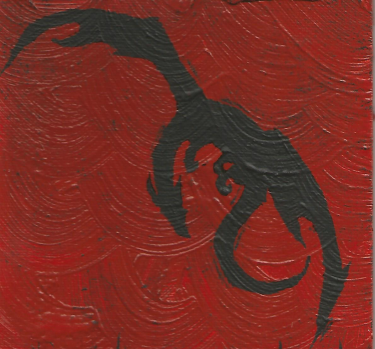In the past I’ve mentioned some of the difficulties I face mentally. I won’t go into any personal details right now, but I would like to share my methods of working through challenges such as brain fog and disorganized thoughts.
With my third volume in The Tales of Draco, Cassius to Krigsansby, coming out, I’m once again left to crafting new stories from scratch. Frankly, after all this time, it feels strange putting fresh ideas into words again rather than going back and revising through material I’ve already written. Along with a few new short stories, I had begun my fourth Tales of Draco volume last month, and I have to say, the initial writing is difficult work for me. Now that I have no previous manuscript to work on, the conceptualized novel ahead of me seems like a monumental task, which it is; and with it, comes anxiety on how to start. I’ve heard similar things from people about to begin an art project. “I don’t know how to start,” they say. You have the image in your mind, but all you see before you is a blank white canvas. Writing a novel is the same way; I couldn’t even begin on my typewriter! So instead, I handwrote the first few chapters, which helped organize my thoughts, before I felt I had a good enough hold on the story to proceed at a faster pace.
Imagine you are about to drive somewhere you haven’t visited before. You study a map and route you need to take to get to your destination. But once you depart, you find yourself driving in thick fog. You can’t see anything beyond thirty feet in front of you; but with your map, you know exactly where you are. You pass a sign that says a certain town is just a few miles ahead. You can’t see anything of the town yet, but you know its coming. You can’t see the open land around you, but you know exactly where to go.
Many of us have experienced brain fog before, or a cluttered mind. When writing a novel, you may have an idea for a certain scene, but you may struggle with how to build up to it. Therefore, when I at least know the direction the story is supposed to take, my main focus should be on the present chapter. What does the central character of the chapter do, and how can it progress the story in my desired direction? Going back on the art analogy, if you are painting, say, a landscape with a forest in the foreground and mountains in the background, you can’t work on both parts of the painting at the same time. You have to go one step at a time; chapter by chapter. You may find yourself driving through fields in the fog, but as long as you know where to go, you will find destination at the right time, and when you look back, you will find your work coming together as a complete story.
–
If you enjoyed reading this post, be sure to leave a like. You can check out my books using the QR code below. Thank you for your support!


